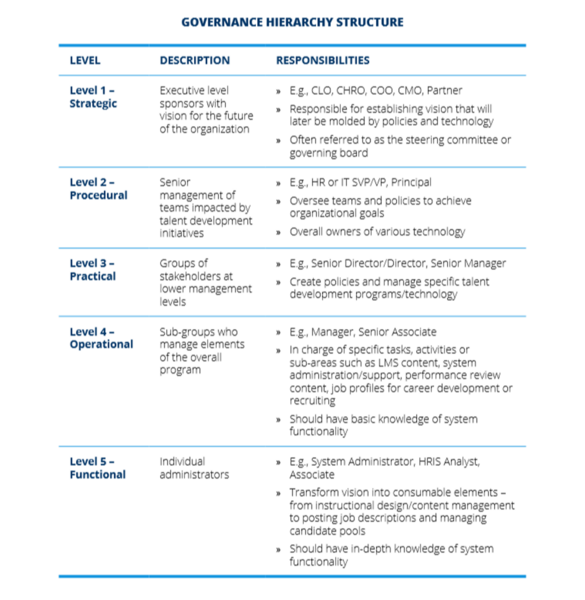ATD Blog
Tips to Optimize Your Talent Management Technology After Go-Live
Wed May 15 2019

The impetus for many companies to implement a new talent management system (or individual modules like recruiting, learning, or performance) is typically centered around a specific need. Healthcare organizations, for example, need a strong learning management system to track and report compliance requirements or continuing education credits. Whatever the driver, implementing the system is just the first step. The most successful organizations constantly evaluate system usage and align their tool with company strategy and business objectives. But how?
They Build a Strong Operational Foundation
Create a Solid Staffing Plan: You can maintain long-term success only by continuing to develop expert administrators (and backups) to support the system. Every level of administration should use available resources from the vendor, implementation project team members, or outside training to upskill system administrators. They’ll address issues the team did not anticipate during the implementation, field new requests, and keep up with system changes.
Establish Comprehensive Governance: The RACI matrix that guided selection and project work leading up to go-live doesn’t always survive. Owners of talent platforms must maintain alignment among stakeholders to ensure decisions are made quickly and met with less pushback once they’re rolled out. This hierarchy should include a representative at every level from the executive/strategic to the administrative/functional. Look at the grid below to see if you can apply the examples to individuals within your own organization.

Drive Adoption Through Communication: You should send information through multiple channels (email, intranet, office postings, etc.) to inform users about continued “technological wins” the system has made possible just as you did when you were about to launch. This may include where you’ve met company goals or simplified previously burdensome interactions. Be sure to constantly report on logins and end-user interaction to compare adoption against baseline levels over time as it will help you make the business case for additional investment in the future.
They Keep Employees Interested
Gather User Feedback: Regularly take the pulse of your employees to find out what’s working and where you can improve. You can also use survey data to discover the most engaged or disengaged users to reach out to understand why they do (or don’t) use the platform and what they like or would prefer to see changed. Given that you’re constantly driving adoption through communication, you should also give your users a chance to give you feedback.
Maintain a Compelling Design: A poorly designed user interface can prevent a user from engaging with the system or cause groups within the organization to splinter off and find their own solutions. Listen to the voice of your users over time and redesign the system accordingly. You may need to enlist developers of homegrown applications, administrators with functional knowledge of a software as a service (SaaS) system, or partner outside of your unit with instructional/graphic designers to assist in creating compelling content.
They Prepare for the Future
Plan for Ongoing Platform Updates: Technology constantly evolves, so you should stay on top of new releases and continuously review for potential workflow breakdowns. Homegrown and on-premise applications allow for enhancements to be adopted based on an internal timetable while SaaS providers may update their platforms two, three, or four times per year at no cost. Whatever path you take, IT will need to be heavily involved as they often must understand the costs and where budgetary responsibility falls for internal or external resources.
Manage an Evolving Talent Ecosystem: You can optimize your talent management ecosystem by identifying additional integration points for various reasons. On the administrative side, integrations can save time and manual effort in data entry. Satisfaction for end-users can also be increased by limiting additional clicks or requiring username and password entry to access systems that should be linked seamlessly. Depending on the approach to use modules within a single system or a “best in breed” talent ecosystem, integrations will be the key to unification.
Implementation is only the beginning—you can use talent management technology to meet goals, engage users, and save time and money. Be proactive in mapping a journey to thrive with your current solution and make plans to continue to invest. Doing this will ensure the technology keeps pace as the overall landscape and business needs evolve, but it will also give you an increasing return on your investment.
For more detailed information on the steps above around how to optimize talent management technology, join me at ATD 2019 International Conference & Exposition for the session Thrive After Go-Live: How to Optimize Your Talent Management Technology. In the meantime, check out this free Optimization Playbook.
You've Reached ATD Member-only Content
Become an ATD member to continue
Already a member?Sign In
